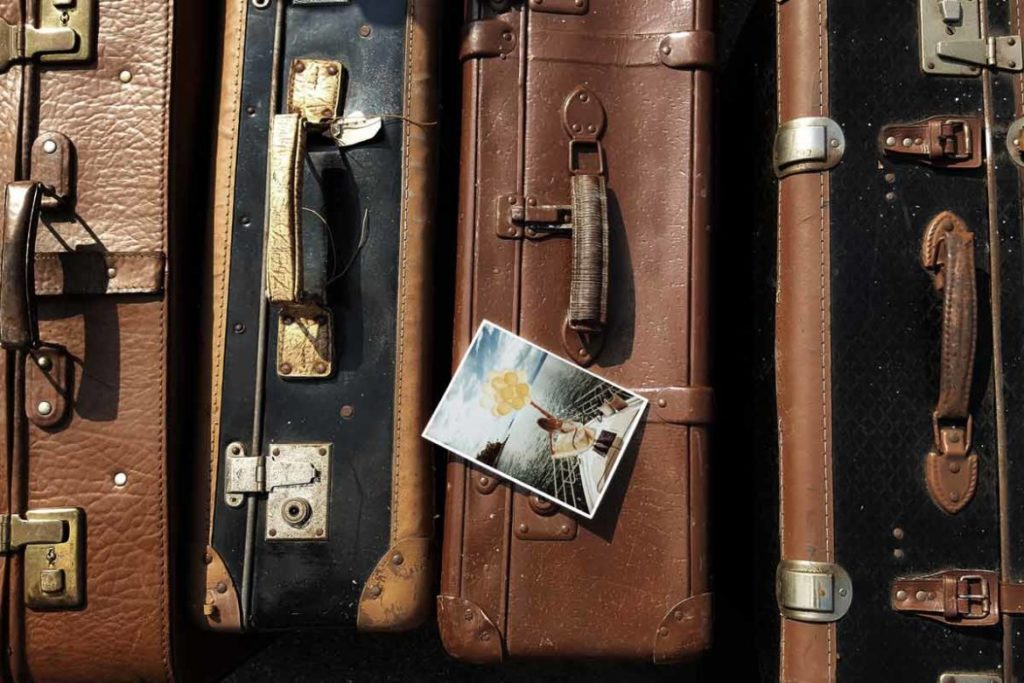Whether you’re sending from your vacation abroad, for someone special’s birthday or just to share some awesome memories with the person who helped make them, the postcard can do no wrong! It connects two people in a gorgeously nostalgic way, with a cool design on the front and a heartfelt word on the back – not to mention the sweet sense of tradition that accompanies it. From its humble origins as a so-called calling card right up to the postcard we know and love today, it’s pretty clear that time has brought a lot of changes.
We’re celebrating the 150th anniversary of the postcard and are taking a look back at the long, changing story of how it became a must-have for Vacation and Co.
The Story of the Postcard: At the Beginning
The history of the postcard shares similar roots in each individual country, but there are also a lot of country-specific differences. Let’s take Germany. In Germany, the German Customs Union was founded in 1834 in order to improve economic conditions in the smaller states that made up the German Confederation (as it was known then). This meant first that weights were standardized and then currencies so that services offered could be better compared.
As part of general standardization, in 1865 postal orders and ‘open’ cards – which were no longer placed in envelopes – were introduced; these are generally regarded as the predecessors of the postcard. There wasn’t much space for anything other than an address, a return address, the date and a signature on them however, as they were primarily intended as notifications of business transactions or order confirmations. This so-called “open shipment” was extremely cheap, costing only four pfennigs.
During this time, the postal director, Heinrich von Stephan, suggested the German Postal Union to introduce the postcard in an attempt to make the postal system easier and quicker for everyone. This proposal steadily gained momentum – but not without considerable resistance.
Opposition to the Postcard
Although the benefits stated by the postal director were clear, concerns had also emerged. The Swiss Post, for example, was initially unconvinced, since the dispatch of postcards in the form of an open sheet would amount to just one third of the postage, meaning in other words significant economic losses.
Such instances of resistance proved unable to stop the triumphant postcard gaining more and more traction. On October 1st 1869 in Austria-Hungary the very first postcard was finally introduced as a correspondence card and from 1870 onwards the North German confederation and the southern areas followed suit.
The Postcard Takes Over
Its success was partly due to the fact that cards were even delivered on public holidays and that, thanks to the extension of the railway network, even people living far away could be reached, often by the following day.
Although the postcard could at first only be sent domestically, after the founding of the Universal Postal Union, they were commonly sent within Europe and from 1878 onwards even worldwide.
The Format of the Postcard
At this point, one side of the postcard was typically reserved for the address of the recipient while the message was written on the back of the postcard. The particular suitability of the postcard – already referred to as such in Germany from 1872 onwards – for short messages became increasingly clear with the arrival of various new types of postcard…
One of these soon became fashionable; the practice of decorating one side of the postcard with patterns and illustrations. This included painted views and, with the emergence of daguerreotype and later photography, realistic images also found their place within the postcard world. Since the front side was still completely reserved for the address, the space available for writing became smaller and as a result, the messages became shorter too. This did not, in any way, detract from the postcard’s popularity. True to the saying “less is more”, people now wrote around the photo or squeezed a short message next to it.
This situation remained the case in Germany until 1905, when a dividing line was first introduced on the addressee side. Now messages were written next to the address rather than in the space between illustrations.
The Postcard for Keeping in Touch
Even in its early years, the postcard was an essential means of communication. In the course of industrialization and its accompanying rural exodus, there was a greatly increased need for communication, which was basically sated by the introduction of the postcard, perfect since mobility and time were becoming more and more important.
The low postage of a postcard made it possible to keep in touch with relatives and friends, even if they were miles away. In this respect, the card certainly fulfilled an important social function.
Even today, the ever-popular postcard connects people with each other and delivers a message. At a time when we can rely on email, SMS, WhatsApp or other electronic media for a speedy message, we still love to write postcards from vacation to send our holiday greetings to loved ones from far away.
The Story of the Postcard: Happy Birthday!
Obviously, the postcard has a pretty exciting history of its own! And at the moment it’s caught in the middle of an exciting time: Between emails and social media, it gives us that sought-after feeling of familiarity and tradition – that exciting moment when you catch sight of the bright colors of a postcard between all those other bills and statements simply cannot be replaced.
Nowadays, cards are more individual and personalized than ever before: By using your own photos directly on your smartphone along with your personal words, your postcard acquires a new form of individuality and combines the digital aspect of the modern era with the analogous charm of a card.


Comments are closed.